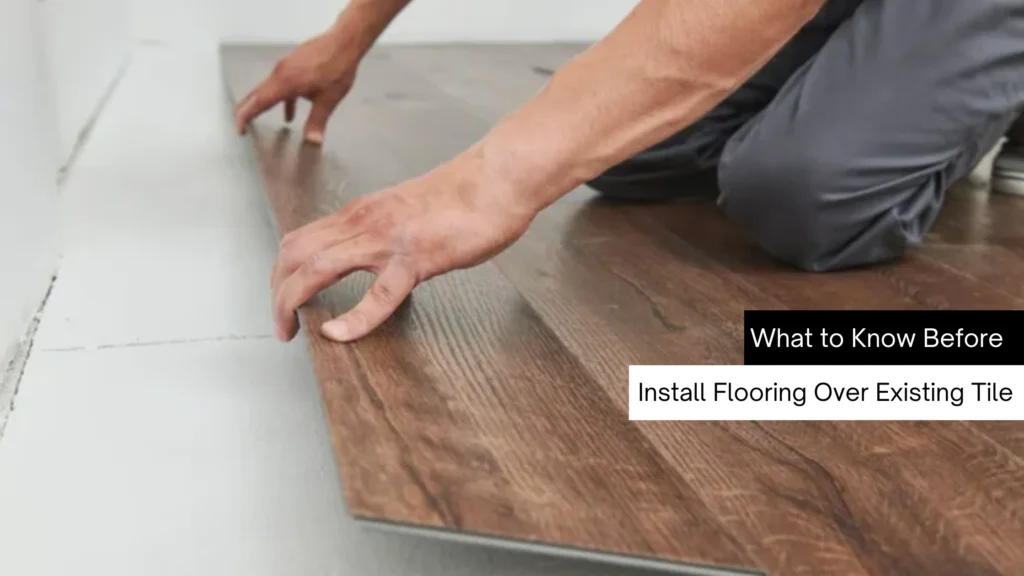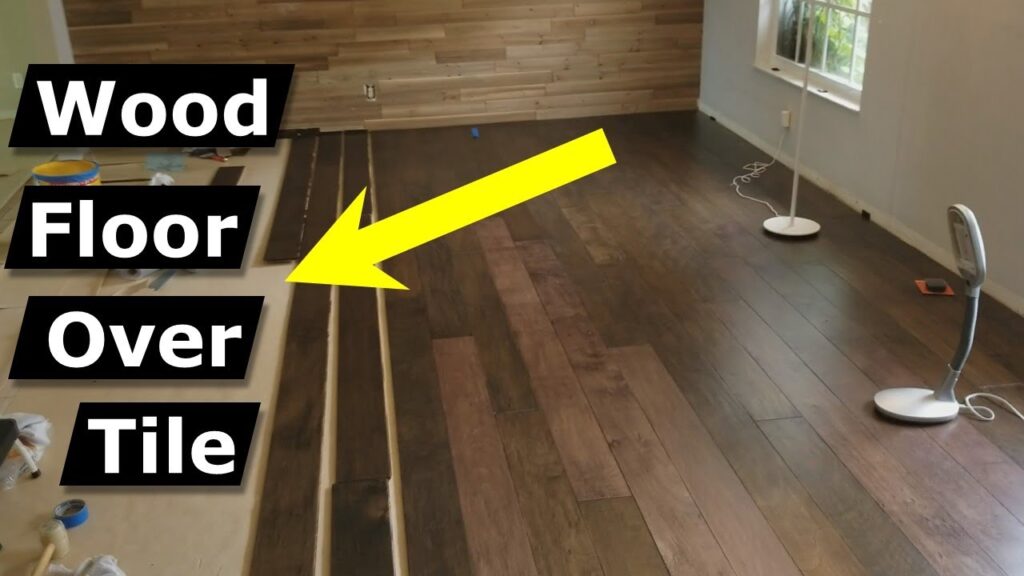- Blog
Can You Install New Flooring Over Existing Tiles?
- By FFExperts
Introduction
Installing new flooring over existing tiles often saves time and reduces waste. We assess the existing tile condition, check leveling, and measure moisture levels. We then advise whether to overlay or remove tiles, based on practical risks and costs.
You want a floor that looks good, lasts long, and fits your schedule. We explain which products work best over tiles, how to prepare the surface, and the likely lifespan of each option. We use real examples from Kampala, Entebbe, and Jinja so you picture the outcome.
We work with homeowners, shop owners, facility managers, and architects. Our service covers supply, installation, and maintenance.
How it works, in plain terms
First we survey the tiled floor. We check tile adhesion, levelness, and movement. Loose tiles usually mean removal. Firm tiles may become a sound base.
Next we measure height tolerances for doors and thresholds. Overlaying raises the finished floor height. We plan trim and door adjustments so doors operate smoothly.
We test for moisture. Wet subfloors undermine adhesives. Where moisture levels exceed safe limits we recommend corrective work before overlaying. We document readings for your records.
 Which flooring types work over tiles
Which flooring types work over tiles
Vinyl plank and luxury vinyl tiles perform well over tiles when the surface is flat and stable. Floating timber laminate also works over tiles when you use a suitable underlay and level the joins. Rigid core LVT tolerates minor unevenness but still requires careful preparation.
Thin engineered hardwoods sometimes install over tiles if adhesives bond to the tile surface and the slab meets moisture limits. Epoxy and self levelling screeds are used to create a new finish over tiles in industrial settings, but only after correct profiling and priming.
Porcelain or ceramic tiles make a firm base for some overlays. If grout joints are deep we fill them first. If tiles rock or are cracked we remove them. We explain options and show samples on site so you choose with confidence.
Risks and when removal is better
If tiles are loose, cracked, or uneven beyond tolerance we remove them. Overlaying over a failing tile layer transfers risk and shortens the new floor life. If the finished height ruins thresholds or creates trip hazards we remove tiles instead.
If moisture seeps through the slab, adhesives will fail eventually. Old, bonded adhesives on tiles sometimes react with new adhesives. When risk of failure is high we recommend removal to give a predictable, long lasting result.
Preparation steps we perform
We clean and degrease the tiled surface thoroughly. We grind glossy tiles to improve mechanical adhesion where adhesive systems demand it. We fill grout lines to level the surface.
We install a decoupling membrane where movement is likely. We apply primers chosen for the overlay type and substrate condition. We check door clearances and plan trims and skirtings so the finish looks neat.
Cost and time considerations
Overlaying usually reduces labour and disposal costs compared with full tile removal. Yet the level of preparation affects price. Leveling, grout filling, and priming add to costs. We provide a detailed, line item quote so you see material, labour, and prep charges.
Overlay projects often finish faster. Small residential rooms may take two to three days. Larger commercial areas require more time for profiling and adhesive curing. We give a clear timeline during the site survey.
Examples you will recognise
A bakery in Ntinda replaced worn tiles with a seamless epoxy overlay. We profiled the tiles, applied a rapid set screed, and finished with a non slip top coat so staff worked safely. A Kololo apartment used rigid core LVT over tiles to speed up tenant turnover. We leveled grout joints, installed underlay, and fitted neat profiles around doors.
Slate stone finishing
SPC Flooring Uganda
Composite Decking Uganda
Granite Flooring Uganda
Top 8 related FAQs
What checks do you do on existing tiles before deciding to overlay?
We inspect tile adhesion and levelness using a hammer and straight edge. We tap tiles to detect hollow sounds. Loose tiles usually require removal because overlaying will inherit the looseness and fail sooner.
We check grout depth and condition. Deep grout lines mean higher filling work. We measure slab moisture with a hygrometer to ensure adhesives bond correctly. We photograph findings and share them so you see the basis for our recommendation.
Is it safe to lay timber or laminate directly over ceramic tiles?
Some engineered timber and laminate products perform well over tiles when the tiles are flat and firmly fixed. We use approved underlays and expansion gaps to allow movement and prevent buckling. Doors and thresholds often need trimming after overlay because the new floor raises the overall level.
If tiles move or the slab shows moisture issues we avoid timber overlays. Timber reacts to humidity and movement. For durability we might recommend LVT or a screed before timber installation.
 How do you handle grout lines and uneven tiles before overlaying?
How do you handle grout lines and uneven tiles before overlaying?
We grind or fill grout lines with cementitious leveller when gaps exceed tolerance. For small deviations we use self levelling compounds to achieve a flat surface. For glossy tiles we mechanically abrade the surface so adhesives form a reliable bond.
If tiles are very uneven we stage the work, milling down high spots and filling low areas. Our survey shows the effort needed and the cost. We present the options so you choose based on longevity and budget.
Will overlaying shorten the warranty and life of a new floor?
Warranty depends on product and installation protocol. Manufacturers often require specific substrate conditions for warranties to remain valid. If we overlay where conditions fail to meet those requirements manufacturers might not honour product warranties.
We use manufacturer approved methods and document preparation. We explain what warranty stays in force and what changes. Our installation warranty covers workmanship and we keep records to support any future claim.
Can epoxy or polished concrete be applied over existing tiles?
Yes, but only after correct profiling and priming. Epoxy requires a mechanical key to bond. We grind tiles or shot blast the surface, then apply primers and screeds as specified. Heavy duty mortar systems give a new structural surface over tiles for industrial use.
Polished concrete over tiles is less common. We usually remove tiles before polishing a slab. For industrial floors a screed over tiles then a seal or epoxy finish often delivers better long term performance.
How does overlay affect doorways, skirting, and thresholds?
Overlay raises the finished height, so doors often need trimming to swing freely. Skirting and architraves may need to be refitted higher. We design transition profiles and ramps where necessary to avoid trip hazards and to keep a neat finish.
We measure all thresholds during the survey and include joinery adjustments in our quote. We coordinate with your carpenter if you prefer local joinery to match existing frames.
Will overlaying improve insulation and sound reduction?
Overlay systems that include underlays can reduce impact sound in apartments and office floors. Some rigid core LVTs include acoustic backings. We select underlays to meet your acoustic requirements where privacy and noise control matter.
For thermal insulation a thicker underlay gives slight improvement. For greater thermal benefit we recommend addressing insulation at the slab or subfloor level during renovation.
How do I schedule a site visit and reserve your installation team?
Send your project address, a brief description, and preferred assessment dates. We will schedule a site visit, bring samples, and run adhesion and moisture tests. After assessment we issue a written quote with a recommended approach.
To reserve our team pay a deposit and confirm start dates. We confirm material lead times and deliver goods before the start. If you need transport for the assessment we assist with vehicle booking; call our office to reserve a car and driver for the visit.
Conclusion
Overlaying new flooring over existing tiles offers time and cost savings when you have a stable, level base. We assess adhesion, levelness, and moisture before recommending overlay or removal. We supply materials, perform careful preparation, and carry out tidy installations for homes and businesses across Uganda.
To book a site visit send your project address and preferred date by phone or message. We will bring samples and run tests. To reserve a car for the assessment call our office and request vehicle booking.